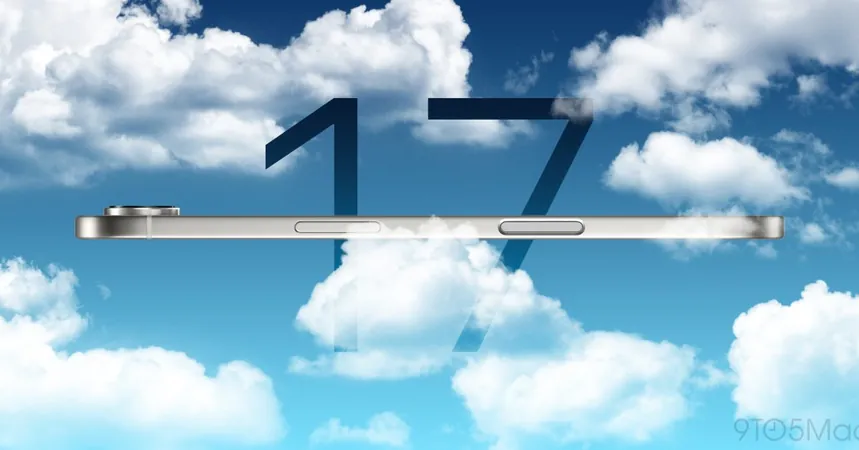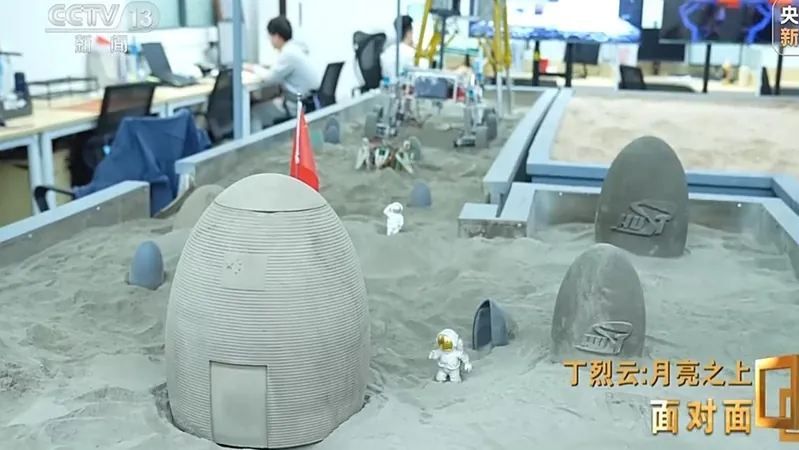
The Surprising Design Choices of the iPhone 17 Air Reveal Apple's Vision for the Future
2024-11-26
Author: Lok
Apple’s highly anticipated iPhone 17 Air is set to make waves with its ultra-thin design, but recent reports suggest that buyers may be in for a series of surprising compromises. These design decisions not only reflect Apple’s strategic thinking regarding this specific model but also point to a larger vision for the future of the iPhone lineup.
Key Compromises in the iPhone 17 Air
The iPhone 17 Air will notably feature a single rear camera, presenting a stark contrast to the dual-camera system of the regular iPhone 17 and the triple-camera setup on the Pro models. This change may not be viewed negatively by all consumers. In fact, many users who prefer a more minimalist aesthetic may find the simplified design appealing, providing an uncomplicated photography experience—just point and shoot.
However, this comes at a cost. According to the latest information, Apple has also opted to compromise on battery life. Reports indicate that the tech giant is struggling to maintain the energy efficiency typically associated with its devices, a challenge compounded by striving for a slimmer profile.
Additionally, the iPhone 17 Air will be equipped with a less advanced wireless chip. It will utilize Apple’s in-house 5G modem, which reportedly does not match the performance of Qualcomm’s version. Users might experience slower peak speeds and slightly less reliable connectivity, lacking support for millimeter-wave technology—an aspect that Apple effectively sidelined as market interest dwindled after the initial hype.
Another major shift is the removal of the physical SIM card slot. While this might not pose a significant inconvenience in markets like the U.S. where eSIM technology has gained traction, it does create barriers for sales in China, where regulations mandate a physical SIM slot.
What This Means for Apple’s Future Strategy
Apple’s willingness to enact such extensive compromises for the iPhone 17 Air signals an aggressive pivot toward a sleeker iPhone profile. This strategy raises questions about Apple’s focus—it seems clear that the company is not just launching a single new model, but instead paving the way for a fundamental redesign across its entire iPhone range.
Delay tactics for the iPhone 17 Air could have allowed Apple to iron out issues related to battery life and connectivity. However, the company appears resolute about launching this model, emphasizing its commitment to innovation. This forward-thinking perspective was echoed by Apple’s hardware chief Jon Ternus, who referred to upcoming iPhone models as “the most ambitious in the product’s history.”
The iPhone 17 Air may be the starting point of a major transformation for Apple's flagship product. By introducing this ultra-slim design, Apple is likely laying the groundwork for future iterations, including possibilities like a folding iPhone. The key challenge has been maintaining the device’s elegance without sacrificing functionality—a mission that the iPhone 17 Air might successfully initiate.
In conclusion, while some might question the rationale behind these compromises, it seems Apple is not merely launching a new device but setting the stage for a paradigm shift in its smartphone design philosophy. The iPhone 17 Air could very well become a hallmark of Apple's innovative spirit, ushering in a new era for mobile technology. Is this the dawn of a more streamlined and cohesive future for the iPhone? Only time will tell!




 Brasil (PT)
Brasil (PT)
 Canada (EN)
Canada (EN)
 Chile (ES)
Chile (ES)
 España (ES)
España (ES)
 France (FR)
France (FR)
 Hong Kong (EN)
Hong Kong (EN)
 Italia (IT)
Italia (IT)
 日本 (JA)
日本 (JA)
 Magyarország (HU)
Magyarország (HU)
 Norge (NO)
Norge (NO)
 Polska (PL)
Polska (PL)
 Schweiz (DE)
Schweiz (DE)
 Singapore (EN)
Singapore (EN)
 Sverige (SV)
Sverige (SV)
 Suomi (FI)
Suomi (FI)
 Türkiye (TR)
Türkiye (TR)